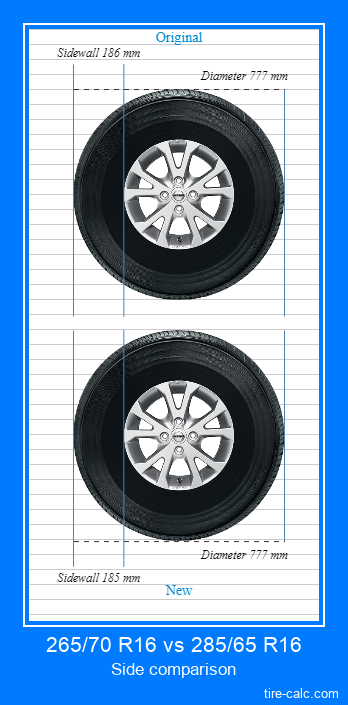

You need tires sized to clear the suspension components, the inner fender wells, and outer fender sheetmetal. Wider, lower-profile tires look hot, but be careful: this is the one dimension that’s both the trickiest to determine and the easiest to screw up. Still, we advise giving their experts a call to discuss your choices before you buy. has a useful tire-size conversion calculator that enables you to compare the diameter (listed as “tire height”), width, and sidewall height of different tires that might work on your vehicle. You can see how it works in this comparison tool that’s on the site. It’s not a perfect rule, but it’ll get you close. If you’re going to larger wheels, Tire Rack offers a good rule of thumb for picking the right lower-profile tire to go with it-which we agree is a good starting point: for each one-inch increase in wheel diameter (going from, say, a 17-inch to an 18-inch wheel) decrease the sidewall height by five-to-ten percent and increase the tire’s width by 10 millimeters. The same goes for off-road oriented truck tires, which may not have lower aspect-ratio sidewalls. Happily, there are dozens of lower-profile passenger-car and truck tires that you can choose from that will be close in overall diameter to those that originally came on your vehicle. Why? A tire that’s too large or too small in circumference will affect the overall gearing of your vehicle will throw off the speedometer reading change the under-car ground clearance might adversely affect the handling and can potentially compromise the performance of safety systems like anti-lock brakes and stability control-which are engineered to work with tires of a specific diameter. But your new, lower-profile tires’ overall diameter-which determines their circumference-needs to remain as close as possible to the diameter of the tires that came with your vehicle. Tires with lower aspect ratios-shorter sidewalls-look cooler and generally perform better, so they’re what most people want when upsizing their cars’ tires and wheels. Tire diameter refers to the height of the tire from the road to the top of the tread. No matter what type of vehicle you’re picking tires for, one of the most important specifications to consider is the tire’s overall diameter.

As you narrow your tire choice, we suggest giving either of these tire retailers a call. Also of note is that Tire Rack tests tires constantly at its own on-site test track, so it has first-hand data on how many of them perform along with a comprehensive database of performance results and sizing options. Sites such as and have detailed descriptions of the hundreds of tires they offer that can help you decide. Truck owners will need to decide whether they want strictly on-road light-duty truck tires or more aggressive off road-oriented tires. If you are replacing tires on a passenger car, crossover, SUV, or truck how you answer those questions will determine whether you opt for all-season touring-style tires, high-performance summer donuts, or even track-capable rubber-though rare is the SUV or crossover that will see track time. Will you be taking your car to track days or competing in autocrosses? Or will you be driving it strictly on the street? If you’ve got a pickup, will you be going off-road, and do you want all-terrain capability? Your vehicle's ride quality (and susceptibility to wheel or tire damage by potholes) as well as braking distances may be negatively impacted, potentially severely so, depending on how extreme you get with your wheel-and-tire size. Also, you should be sure to consider the downsides of larger, heavier wheels and tires. Whether you are looking for tires for a car, crossover, or truck, there are three important things to consider before you purchase your new tires: how you’ll be using your vehicle the new tire’s overall diameter and the width of the new tire. After all, no one wants to waste their hard-earned dollars on tires and wheels that either don’t fit, hurt the performance of their vehicle, or pose a threat to safety. Though a lot of the sexiness of upsized wheels-and-tires comes from the aftermarket wheels you’ll be bolting on, you first must pick the right rubber. Three Things You Need to Know to Choose the Right Tires
Compare tire sizes how to#
For trucks, larger can also mean fatter and knobbier, a look that says “I can conquer any terrain.” Ready to swap your vehicle’s shoes for a new set? Here’s how to find the right, larger tires that will fit properly, look bad-ass, and work well. For passenger cars and crossovers this almost always means going to larger-diameter wheels and lower-profile-and often wider-rubber.
Compare tire sizes drivers#
No wonder so many drivers outfit their ride with new, stylish footwear. If you think that most vehicles-especially your own-would look better fitted with a set of larger wheels-and-tires, you're in good company-just ask any car designer.


 0 kommentar(er)
0 kommentar(er)
